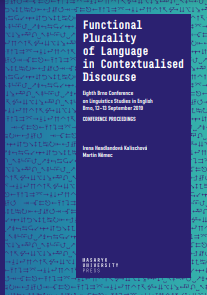THE CONCEPT OF POWER IN COMPUTER-MEDIATED COMMUNICATION
THE CONCEPT OF POWER IN COMPUTER-MEDIATED COMMUNICATION
Author(s): Šárka Hastrdlová
Subject(s): Language studies, Communication studies, ICT Information and Communications Technologies
Published by: Masarykova univerzita nakladatelství
Keywords: computer-mediated communication; sub-group; chat participant; active; non-active; power; status; language in use; address; non-verbal action displays; sociogram;
Summary/Abstract: There has been a recent increase of interest in the phenomenon of power amongst linguists and also philosophers. The presented article attempts to consider power and ways in which it is exercised through language of computer-mediated communication (further CMC). This unique environment is determined by the specific conditions of an Internet chat room, such as anonymity and no audio-visual cues. In the theoretical part, Watts’s and Diamond’s investigations of power in various open and closed groups in oral communication are discussed and the notion of status is presented. The author divides the chat group corpus into individual sub-groups and tries to draw a graphical presentation, a sociogram, to show their complexity and distribution of power. However, the question remains how tight the sub-groups in CMC are or how interrelated they are with one another. In this respect, it is noteworthy to observe how a selected chat participant develops her status in various sub-groups and to analyze the means by which this possible status is achieved. The corpus was collected by the author herself. The main hypothesis is that the status of power changes quickly throughout chatting and it depends to a great extent on other cues such as address, non-verbal action displays, punctuation marks and so on. In other words, there are very few means by which to exercise power and hold it in this continuously changing and anonymous environment.
- Page Range: 35-50
- Page Count: 16
- Publication Year: 2020
- Language: English
- Content File-PDF

